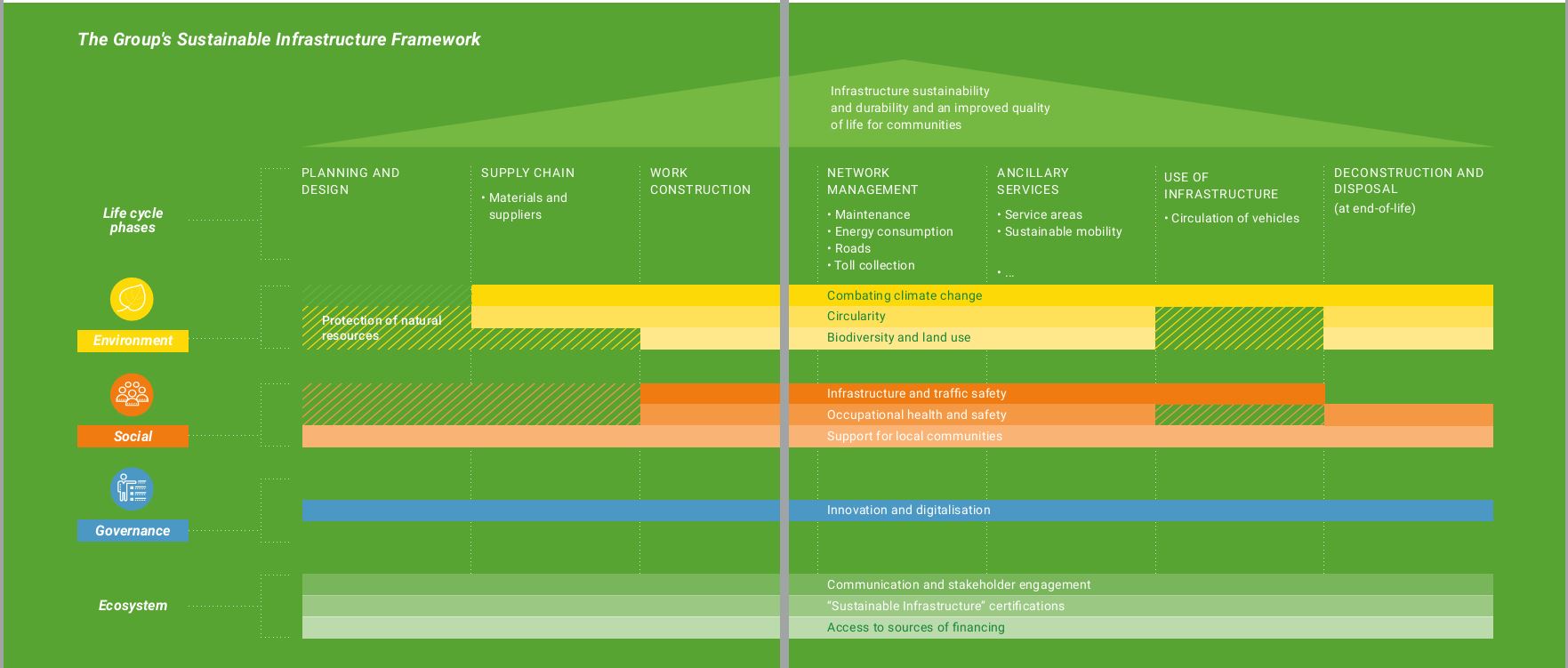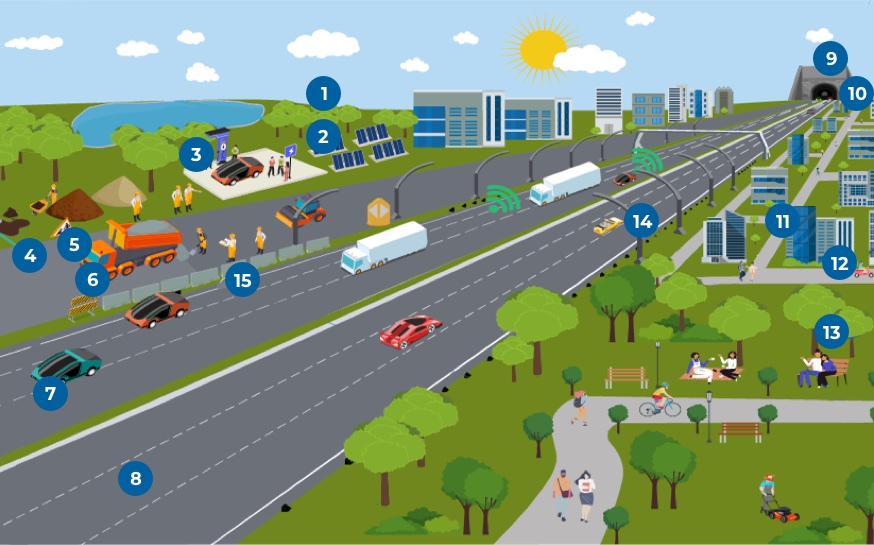Sustainable infrastructure
Sustainable infrastructure
Designing, building and managing sustainable infrastructure means managing complex processes that involve numerous internal and external players, with the goal of pursuing a balance between environmental protection and local social and economic development.
Among the different phases of the life cycle of infrastructure, planning and design assume strategic importance, since it is during these phases that the work is "thought out and designed" in all its aspects. Sustainable design, which also includes the choice of including in technical specifications and calls for tenders criteria that reward suppliers capable of meeting certain ESG requirements, also becomes an opportunity to stimulate the search for virtuous and sustainable solutions and construction methods.
Autostrade per l'Italia is committed to the execution of an important investment plan consisting of activities to upgrade and modernise the network and building a number of major infrastructure projects such as the Bologna Bypass and the Genoa Gronda.
The Group's Sustainable Infrastructure Framework

Bologna Bypass
The Bologna Bypass is the first motorway project in Europe to receive “Platinum” certification from Envision at the beginning of 2022 in recognition of the overall sustainability of the project.
Application of the sustainability framework to the Bologna by-pass has led to the identification of further initiatives, currently being evaluated, to improve our ESG designing profile in addition to those already identified.

 Climate Change
Climate Change
Green interventions
To abate partially emissionsCharging infrastructure
Within the area, to encourage the electrificationPhotovoltaic plants
To produce renewable energy Circolarity
Circolarity
Middle product reuse
in line with recent results from Research and DevelopmentDemolition concrete reuse
For the base of the road embankment (premium in tenders)Use of recycled steel
For reinforcement and structural uses (premium in tenders) Land use and biodiversity
Land use and biodiversity
Minimization of land use
Vs alternative projectsHydraulic invariance
Along the whole platform Support to local communities
Support to local communities
Phonic gallery
Integrated with urban space through dedicated parkPedestrian and Cycling routes requalification
Both in dedicated locations, and inside parksListening tables
And implementation related changes to the project Smart Road and safety
Smart Road and safety
Road sensor C-ITS
To enable autonomous driving vehicles (under experiments)Worksites digital communication
To minimize the impact due to the construction sitesDigital technologies supporting road safety
Eg, monitoring cameras, speed detection… Health and safety
Health and safety
Maximization of safety on site
By supporting the culture of safety and using new technologies
Infrastructure safety
Autostrade per l'Italia Group's primary objective is to provide the country with an infrastructure of excellence, capable of guaranteeing the achievement of the highest standards in terms of both the safety of users and workers, the quality of service and finally the safety and resilience of the assets under concession.
In order to guarantee impartiality in the execution of the surveillance and monitoring activities of the network, the relative activities have been entrusted to a consortium of independent international companies selected through a European tender.
In 2021, routine inspection activities covered all of the network's more than 4,300 bridges, viaducts, overpass- es and tunnels.
Autostrade per l'Italia's new monitoring model
Interventions for the reduction of emissions
Among the actions undertaken to reduce the emissions deriving from its activities, is the initiative launched in 2021 through the Free to X Company, to build a network of high-power electric charging stations that will be available in 100 service areas by 2023 on the highway network, with an average distance between them of 50 km. Four to six multi-client stations will be installed at each station with an average charging time of 15- 20 minutes ensuring a travel experience similar to that of a vehicle with a traditional combustion engine.
Moreover, at the beginning of 2022, was established Elgea whose mission is to produce energy from renewable sources that will cover Autostrade per l'Italia's entire needs when fully operational. The Company will aim to build facilities without further land consumption, starting from the areas of the highway site otherwise unused and exploiting the spaces within the service areas and parking lots.







